
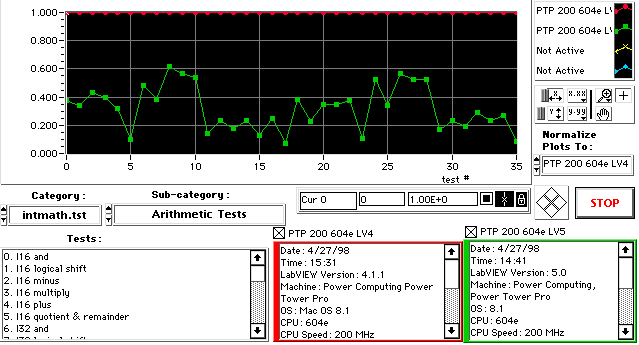
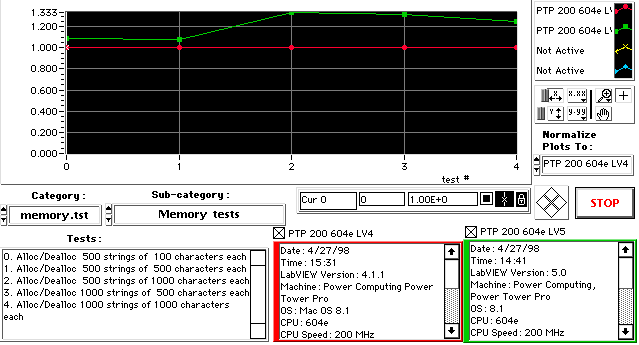

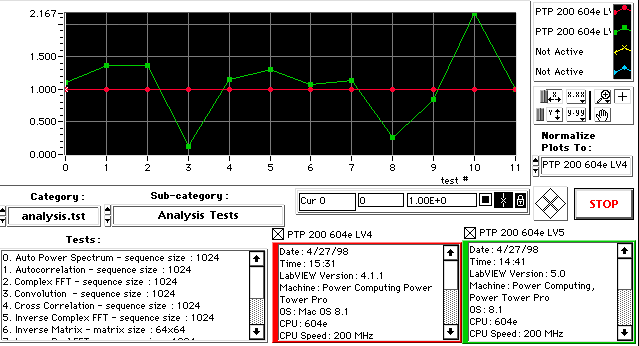
In this case the only interesting comparison is the relative speed of the benchmarks under LV5 compared to LV4. These compare the same VIs on the same machine under similar circumstances. I attempted to have my Mac in identical states for two tests.
In general, LV 5 is much faster than LV 4. There are some areas where LV5 is a bit slower such as memory allocation, but for calculations it has been speeded up substantially. The following graphs are representative of the speed differences I found. The green graph is LV 5 and the red line is LV 4. The ordinate is in relative time so that a smaller time is better.





These are repeats of a test suggested by Alan Hahn from Fermilab. This creates two random arrays of double precision numbers and calculates the dot product. This is done in 3 ways:
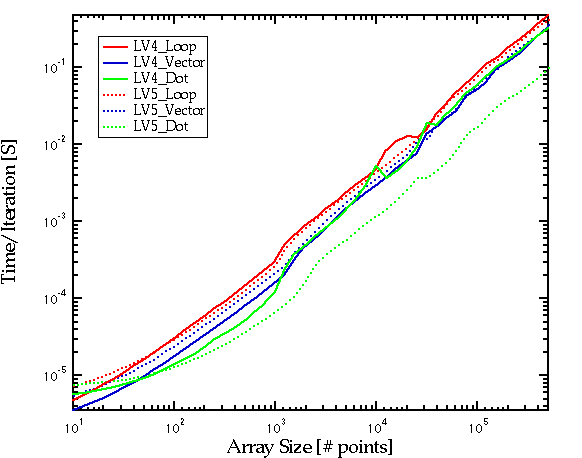
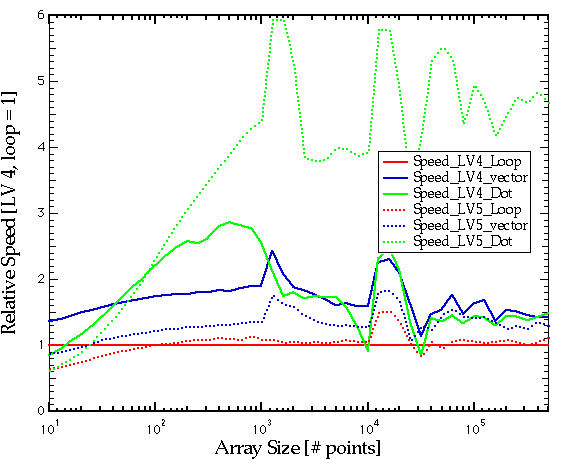 Note that the dot product has substantially been improved in LV 5. Overall it appears that LV 5 is faster than LV 4 for this operation. The built in dot product function is the fastest method as one would expect.
Note that the dot product has substantially been improved in LV 5. Overall it appears that LV 5 is faster than LV 4 for this operation. The built in dot product function is the fastest method as one would expect.
All tests were run on a 200 MHz, 604e Mac, System 8.1, base extensions only, Virtual Memory off. [an error occurred while processing this directive]